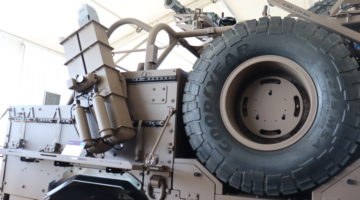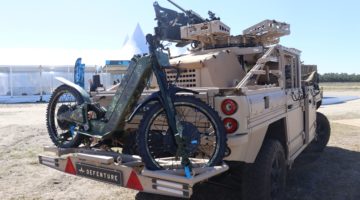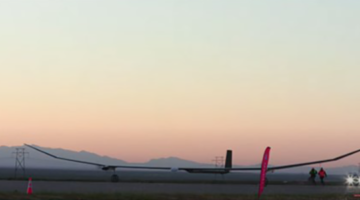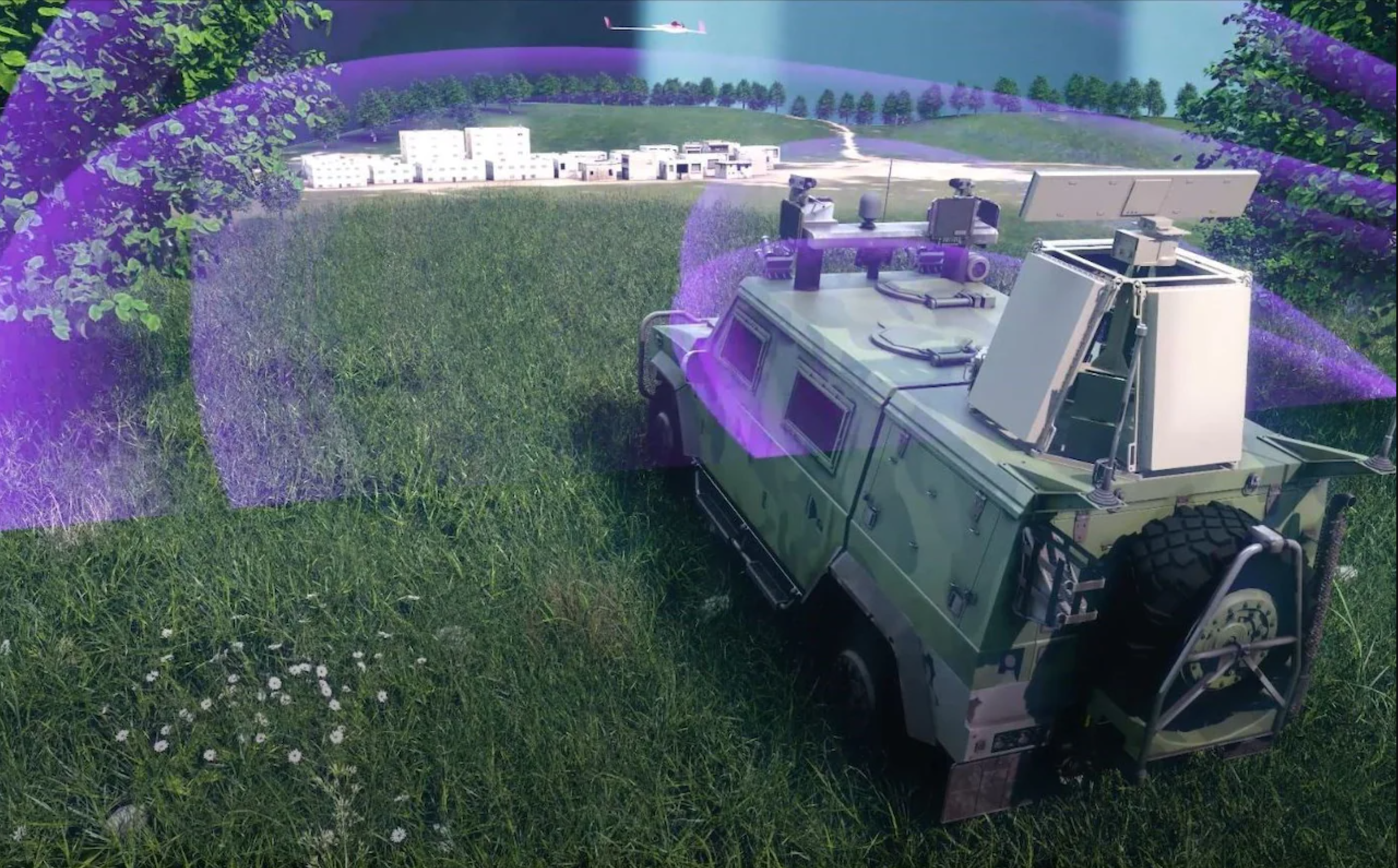(1) Innovation Technologique
- ISRAËL présente son intelligence artificielle pour le combat inter-armes :
Source: telegraph.co.uk
Abstract
“Israel is developing an artificial intelligence super brain that uses an array of powerful sensors to help tanks and robots patrol battlefields and find enemy targets. The Artificial intelligence, named Athena after the Greek goddess of war, is in the early stages of development at Israel Aerospace Industries (IAI) but could be deployed over the next decade. The Daily Telegraph received exclusive access to Athena’s program, including a simulated demonstration of the brain used by tanks in a combat scenario. In this scenario, Israeli Carmel tanks were equipped with smartphone-sized AI that collected data from infrared and radar sensors, including to mark enemy fighters hidden underground and in buildings on the battlefield. In an instant, the data was transferred to the commander and turned into a battle menu with the best methods of attacking targets.
Athena can also be connected to the tank’s fire control and maneuvering systems, allowing it to attack targets automatically, although the commander makes the final decision on how to proceed. Israeli state defense firm IAI is also considering installing Athena on robotic vehicles that could automatically patrol border fences in search of intruders. The country hopes that AI defense systems will make its army more efficient, as machines can analyze the battlefield and generate a tactical battle plan much faster than the human mind.“
Synthèse en français
« Israël Aerospace Industries » (IAI) a développé un système de combat utilisant un processeur d’intelligence artificielle et un vaste spectre de capteurs pour aider les blindés et les drones à « reconnaître » le champ de bataille et identifier des cibles ennemies. Cet outil nommée Athéna d’après la déesse grecque de la guerre, en est aux tout premiers stades de son développement, mais devrait être déployé au cours de la prochaine décennie. Le Daily Telegraph a eu un accès exclusif au programme d’Athéna, y compris une démonstration simulée des capacités du processeur intelligent utilisé par les chars dans un scénario de combat.
Dans ce scénario, les chars israéliens « Carmel » ont été équipés d’un processeur doté d’IA de la taille d’un smartphone qui a pu recueillir les données à partir de plusieurs capteurs, infrarouges et radar, y compris pour marquer les combattants ennemis dissimulés dans des bâtiments sur le champ de bataille. En un instant, les données ont été transférées au commandant et transformées en un menu de combat proposant les meilleures méthodes de traitement de cibles.
Athéna peut également être connecté aux systèmes de contrôle de tir et de manœuvre d’un char, ce qui lui permet d’automatiser son action offensive, bien que le commandement conserve la décision finale sur la façon de procéder. La société de défense publique israélienne IAI envisage également d’installer Athéna sur des drones qui pourraient patrouiller de manière autonome les clôtures frontalières du pays.
Le pays espère que les systèmes de défense basés sur l’IA amélioreront l’efficacité de son armée, dans la mesure où les machines peuvent analyser le champ de bataille et générer un plan de bataille tactique beaucoup plus rapidement que l’esprit humain.
Lien URL
(1) Espace
- La Chine s’approche du lancement de la première section d’une nouvelle station spatiale
Source: newscientist.com
Abstract
“China is about to launch the first section of a new space station, beginning an orbital construction project that is expected to end in 2022 with an outpost about a quarter of the size of the International Space Station (ISS). While the exact date hasn’t been announced, China is expected to launch its 18-metre-long core module, called Tianhe, this week. Tianhe will contain living quarters for up to three astronauts, along with the station’s control center, power, propulsion and life-support systems. It will be followed by two other main modules, both designed to house scientific experiments. The Chinese Space Station (CSS) will be the 11th crewed space station ever built. It is China’s third station, although the previous two were significantly smaller. The CSS will be slightly larger than Mir, the Soviet space station that preceded the ISS.
“China, in a sense, is trying to catch up with capabilities that other space powers that have already done,” says space analyst Laura Forczyk. “One of the things that helps China here is that their government is not democratic, so there isn’t the infighting that we have in the US about what the priorities are and how to fund them.”
That has allowed the nation to develop this technology relatively quickly, but Charles Bolden, who served as NASA administrator under President Barack Obama, says China will struggle to match US capabilities in space. “Technologically, I don’t think they’re going to catch up as long as we keep up with the pace that we’re going in terms of human space flight.”
Synthèse en français
La Chine est sur le point de lancer la première section d’une nouvelle station spatiale, en commençant un projet de construction orbitale qui devrait se terminer en 2022 avec un avant-poste d’environ un quart de la taille de la Station spatiale internationale (ISS). Bien que la date exacte n’ait pas été annoncée, la Chine devrait lancer cette semaine son module de base de 18 mètres de long, appelé « Tianhe ». « Tianhe » contiendra des logements pouvant abriter pour jusqu’à trois astronautes, ainsi que le centre de contrôle de la station, la propulsion et les systèmes de soutien de la vie. Il sera suivi de deux autres modules principaux, tous deux conçus pour la conduite d’expériences scientifiques. La Station spatiale chinoise (CSS) sera la 11e station spatiale en équipage jamais construite. Il s’agit de la troisième station de Chine, bien que les deux précédentes aient été plus petites. Le CSS sera légèrement plus grand que Mir, la station spatiale soviétique qui a précédé l’ISS.
« La Chine essaie de rattraper les capacités d’autres puissances spatiales », explique l’analyste spatiale Laura Forczyk. « L’un des avantages du système en Chine est que son gouvernement n’est pas démocratique ; il n’y a donc pas de luttes intestines comme aux États-Unis lorsqu’il s’agit de définir les priorités et de déterminer la façon de les financer. » Cela a permis à la nation de développer cette technologie relativement rapidement, mais Charles Bolden, qui a servi comme administrateur de la NASA sous le président Barack Obama, dit que la Chine aura du mal à égaler les capacités spatiales américaines. « Sur le plan technologique, je ne pense pas qu’ils arrivent à rattraper leur retard tant que nous maintiendrons le rythme prévu de vol spatial humain ».
Lien URL
Image satellite Photo © telegraph.co.uk











